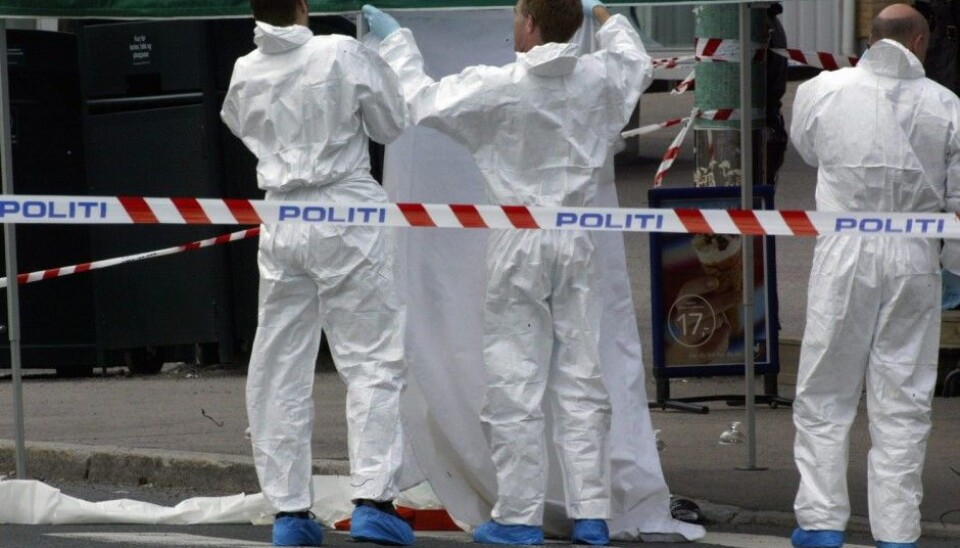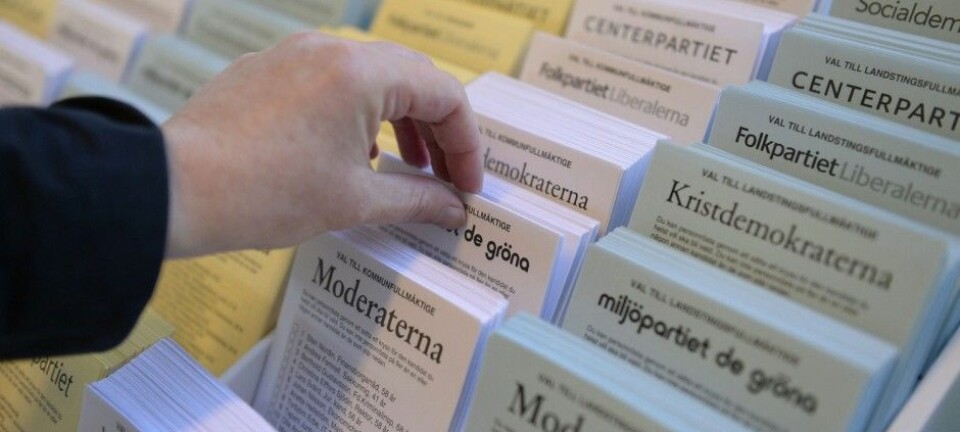
DNA evidence is not always foolproof
DNA testing has become more and more precise, and tests can now be conducted on tiny bits of material from the crime scene. But DNA testing has its —mostly human—weaknesses.
Every year, the Criminal Forensic Genetics Division at the Norwegian Institute of Public Health conducts upwards of 8000 DNA tests. Their goal is to find or rule out suspects in criminal cases. In some 1800 of these cases, they actually find a match in DNA registers.
But in spite of the care with which these tests are done, and the clear advantages DNA evidence offers, there remain weaknesses with DNA testing, says Marium Bouzga. Bouzga is a senior engineer at the division and an expert witness in criminal cases involving DNA testing.
Bouzga recently gave a talk on the use of DNA as forensic evidence at a seminar in Oslo sponsored by the Norwegian Biotechnology Advisory Board.
DNA can be transferred accidentally
Even though DNA tests themselves can provide more reliable results than in the past, DNA evidence on its own can be vulnerable to mistakes or mishandling, Bouzga says.
For example, the police can’t always be certain that the biological material they find at a crime scene actually was left there when the crime was committed.
A murder case in California shows how frighteningly easy it can be to make potentially problematic mistakes, Bouzga says.
“Police found traces of DNA under the nails of the victim, and the DNA matched someone who had a criminal record. There was only one catch: The suspect in question had been hospitalized when the murder happened. He could not have committed the crime,” she said.
It eventually came to light that the paramedics had transported the suspect from a traffic accident to the hospital, and then had gone on to the crime victim.
“DNA from the injured man had been transferred to the crime victim, because the paramedics had not washed their hands,” Bouzga said.
Bouzga says this shows how vulnerable DNA can be as evidence in criminal cases. In the worst case, an innocent person could be sentenced for a crime that he or she did not commit.
Mishandling of evidence
DNA evidence played a hand in acquitting the American former football star, O.J. Simpson, who was accused of killing his ex-wife and her friend.
Part of the reason for the acquittal was that police had not followed procedures for storing evidence, Bouzga said.
The television series Making a murderer is based on a true story where DNA handling —and mishandling— played a critical role. As part of the criminal investigation, police found DNA from the defendant that linked him to the crime scene where a photographer was found murdered. But the police could not say whether or not they had followed proper procedures for handling the evidence, and there were suggestions that it had been tampered with and the suspect’s DNA had been planted on the crime scene.
For these reasons and more, Bouzga holds regular courses for the Norwegian police to ensure that they follow procedures for the safe collection and storage of material to be tested.
Timing, contamination at issue
If the victim and the suspect knew each other, the DNA may have been left in the days before — and not when — the crime was committed. It is rare that scientists can say precisely when biological material was left.
In other cases, there may be some time between when crime is committed to when the police find traces of biological material. In this situation, the material may be washed away or contaminated by other people.
DNA technology has made huge gains
While police once needed a visible stain with blood or semen to collect enough material to run a DNA test, the technology has now improved so much that tests can be done on tiny bits of material that may be invisible to the naked eye.
“Now we just need a cell with blood, saliva or semen, or a strand of hair,” Bouzga says.
A cell contains a two-meter long strand of DNA. Researchers use a special technique, called polymerase chain reaction, to make multiple copies of the DNA.
Kary Mullis, an American who invented this technique, won the Nobel Prize in Chemistry in 1993.
Norway at the forefront
In recent years scientists and forensic experts have also had access to more sensitive instruments. In fact, Norway was the second country in Europe to adopt the most accurate techniques available for DNA testing.
“The methods for extracting DNA have also improved,” Bouzga said. “We can identify several different areas in DNA samples, and we need less material than in the past.”
Nevertheless, Bouzga says, investigators and the public need to remember that DNA test results are just one piece of the puzzle.
“Any results from DNA testing must be seen in the context of other circumstances in the case,” she said.
--------------------------------------
Read the Norwegian version of this article at forskning.no

































